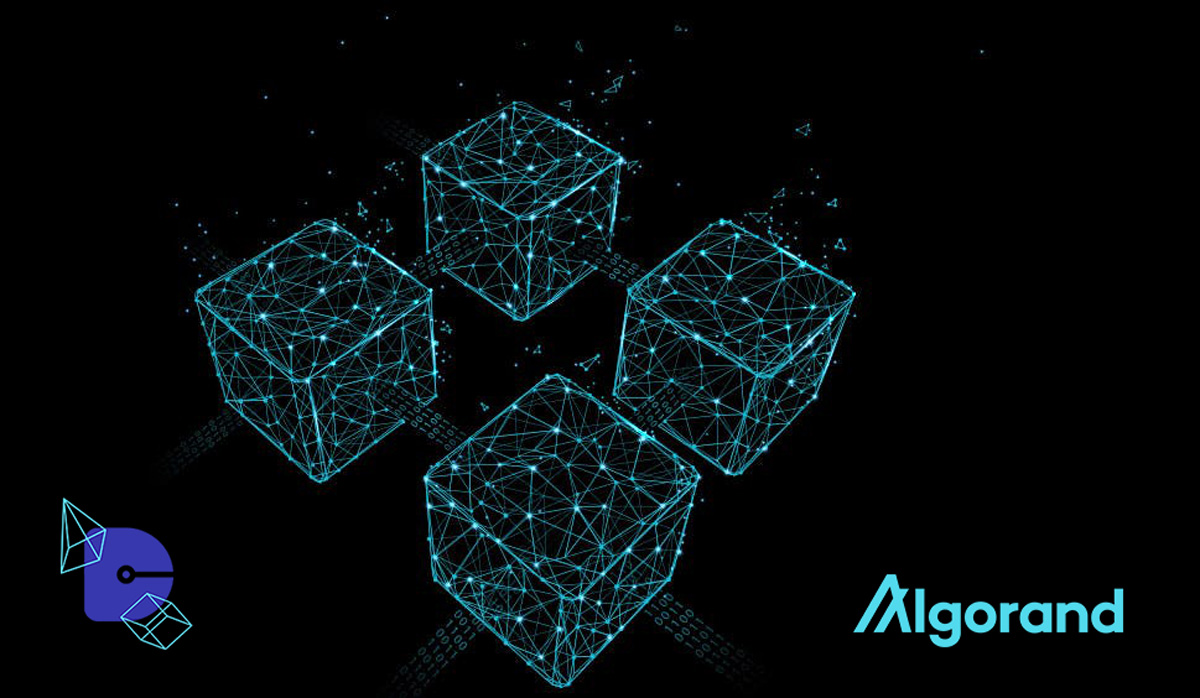Algorand. What is it?
ALGO is the token for the Algorand system. Algorand in itself is a decentralized, scalable, and secure blockchain that serves as a platform for building products and services.
It was founded in 2017 by Silvio Micali. Micali has a Ph.D. in Computer Science from the University of Berkeley and has been a professor in the Electrical Engineering and Computer Science department at MIT since 1983.

In his time, he has received the Turing Award for Computer Science, the Godel Prize for Computer Science, and also the RSA price for cryptography.
The man is a genius and he is the main brain behind Algorand alongside many other bright minds who he has assembled to build.
The Algorand Project
The Algorand Project as stated by the makers is: “global trust through decentralization, simple designs that drive adoptions by billions of people and elegant technology that eliminates barriers to prosperity for all.” That is a wordy statement but simply put, The Algorand project can be regarded as a general-purpose cryptocurrency. Other examples of this type of cryptocurrency include Cardano or Polkadot. Algorand also serves as a platform on which a whole lot of different apps can be built. The platform also has room for tokens, NFTs, Stablecoins and it boasts an extremely cost-effective payment infrastructure. ALGO– the Algorand network token– gives all the benefits of Bitcoin such as its transparency, decentralization while Algorand has smart contract functionality to its blockchain.
Algorand is also built as a green blockchain with an environmental impact focus from the very beginning. Silvio Micali major focus was on sustainability for our planet with next-generation technology. With his unique consensus mechanism, Algorand is far more energy-efficient than other blockchains and is going further by offsetting its small carbon footprint in partnership with ClimateTrade.
Technical Advantage of Algorand
The Blockchain Trilemma is a popular concept that proposes that there are three main issues that developers will face when building blockchains and more often than not, they’ll have to sacrifice one ‘aspect’ for the sake of the other two. The three are Decentralization, Security, and Scalability.
- Decentralization: Rather than control being managed by one entity, blockchains should distribute control over the network equally among participants
- Security: The blockchain system should have ironclad defenses that prevent bugs, malicious attacks, and other problems.
- Scalability: Blockchain should be able to support multiple transactions and users without the risk of failing in the form of increased fees and transaction times.
Algorand solves these problems by the use of a protocol called Pure Proof-of-Stake (PPoS). An explanation is given below but a more In-depth dive into how it works can be found on the Algorand Website.
Algorand PPoS
Algorand’s consensus mechanism is the Pure Proof-of-Stake and it operates on a simple principle. The basic idea is that letting everyone compete against each other with mining is quite wasteful. Instead, an election process is done in which one node is randomly chosen to validate the next block. These people are called Validators. Validators aren’t chosen completely randomly, for you to become a validator, a node has to deposit a certain amount of coins into the network as a stake. This can be considered as a security deposit. The size of the stake determines the chances of a validator being chosen to forge the next block, the higher the stake, the higher your chances of being chosen. There might be confusion as it seems to favor the rich, but in reality, it’s much better than proof-of-work. Electricity and equipment do not go up linearly and the rich in that mechanism get better the more they pay. It only increases your chances in this mechanism. A reward for being chosen as the validator is that you receive the fees that are associated with the transactions as a reward. We can trust the validators because if they approve a fraudulent transaction, a part of their stake is lost and as long as the stake is higher than what they get from their transaction fee, they can be trusted to do their job correctly. If not, they stand to lose more money than they gain.
If a node stops being a validator, their stake plus all the transaction fees gotten will be released after a certain period because the network still needs to be able to dish out punishment if they discover that some blocks are fraudulent. Pure Proof-of-Stake allows for more decentralization and security in that it is easier and a lot less expensive to set up a node for a Proof-of-Stake-based blockchain which encourages more people to participate.
Cheating done by the minority of money is not possible and cheating done by the majority is just plain stupid. The mechanism operates in such a way that people with small stakes cannot cheat and those that have large stakes in the networks will be dumb to do so as cheating devalues their holdings and will make no sense whatsoever in an economic sense. The protocol will work perfectly well as long as ⅔ of the majority are honest.
There are weak points of Pure Proof-of-Stake such as the 51% attack. It is a group of people owning 51% of the cryptocurrency which in turn makes them effectively control the blockchain. That is less likely to happen though, depending on the value of the blockchain and that is quite impractical. Pure Proof-of-Stake also has to be careful in the selection of validators. It cannot be completely random because the size of the stake has to be factored into the selection process, but the stake alone isn’t enough as that favours rich people. Another issue that could pop up is if the chosen validator doesn’t show up, but that is solved by choosing a large number of backup validators as fallback options. The mechanism also exists such that consensus on blocks is established through two stages which are a proposal stage and then a voting round. It means that whoever does anything is completely random and that makes it virtually impossible to manipulate.
This knowledge of how the Pure Proof-of-Stake works is the foundation for the Algorand Blockchain and shows just how exceptional this cryptocurrency is. Transactions that are carried out on the blockchain are processed extremely fast and some key statistics that can be noted include:
- Algorand transactions typically take less than 5 seconds to complete
- Transactions can be very small (as little as 0.0001 ALGO)
- Transaction fees are tiny at 0.001 ALGO (currently $0.0014)
These qualities setup Algorand to be a perfect candidate to eliminate the Blockchain Trilemma.
Ecological Advantage of Algorand
There have been some issues with the main cryptocurrency, Bitcoin. BTC’s energy consumption was so bad that Elon Musk took a backward step from Tesla’s multi-billion dollar commitment to the coin. It has gotten better since China banned bitcoin mining and El Salvador even took steps to mine with geothermal “volcano” energy but the energy usage of Bitcoin is still enormous. Algorand is trying its best to correct that and you should take notice of that. It operates on the previously discussed Pure Proof-of-Stake model which is more energy-efficient than Bitcoin’s proof-of-work system.
ALGO provides almost all of the benefits of Bitcoin — benefits like immutability, transparency, and decentralization — while adding smart contract functionality to its blockchain. It also operates on a Pure Proof-of-Stake model, which is a much more energy-efficient consensus protocol than Bitcoin’s proof-of-work system.
A statement on Algorand’s website read:
Sustainability has been a core component of Algorand since its inception. As the world’s first pure Proof-of-Stake blockchain, the Algorand network was designed from the ground up to minimally impact the environment. Because its consensus is not based on energy-intensive proof-of-work and requires minimal computational power or electricity, Algorand has been a leader in minimizing the environmental impact of blockchain technology. The energy required to run a node in the network is negligible and can be done on a device as simple as a Raspberry Pi. Compared to other blockchains, digital asset creation and transactions on Algorand result in magnitudes less CO2 emissions, with initial analysis demonstrating around 2 million times less.”
This statement emphasizes Algorand’s commitment to low-carbon operation.
Algorand’s Decentralized Governance
Algorand is particularly committed to the Decentralized Governance of its blockchain. A statement read: “The Algorand blockchain is entirely decentralized, which means there is no powerful central authority or single point of control. A unique committee of users is randomly and secretly selected to approve every block. Nodes are run by entities representing diverse backgrounds across many different countries.”
The Blockchain also has the attributes of being:
- Fair & Transparent: Control is distributed among all individual network participants
- Accurate: No risk of data being manipulated, lost or destroyed
- Secure: Fault-tolerant with no special group of users for an attacker to target
Algorand on-chain NFT
It seems that there is no limit to the adoption of NFT’s (Non-fungible tokens) these days with their range making companies and institutions using them for differing purposes. Algorand is at the forefront for NFTs and is a leading platform for their usage. Italy’s largest copyright agency (SIAE) rolls out NFTs representing authors’ rights on the Algorand blockchain. Algorand also supports fractional NFTs. This function enables multiple people to co-own tokenized assets.
Algorand DApp Support
Decentralized apps are also the range nowadays and Algorand is not behind on that front. Algorand provides a sufficient web API along with SDKs for multiple languages including JavaScript, Java, etc. All of these have proper documentation and thriving communities. There are several DApps available on Algorand and they span from voting apps to crowdfunding applications to even Covid Trackers. The range for expansion is there and there is no limit to what can be achieved except the human imagination.




Nice work. Very informative.
I’ve heard about algorand before but I never paid much attention to it, this article has changed that.
I understand the algorand project better now.
Thank you.
THanks alot
Great selection of modern and classic books waiting to be discovered. All free and available in most ereader formats. download free books https://www.philadelphia.edu.jo/library/directors-message-library
whoah this blog is wonderful i really like reading your articles. Keep up the great paintings! You realize, a lot of people are hunting round for this info, you could help them greatly.
I have read so many posts about the blogger lovers however this post is really a good piece of writing, keep it up
Great selection of modern and classic books waiting to be discovered. All free and available in most ereader formats. download free books
Amazing knowledge and I like to share this kind of information with my friends and hope they like it they why I do
Your blog provided us with valuable information to work with. Each & every tips of your post are awesome. Thanks a lot for sharing. Keep blogging,
A good blog always comes-up with new and exciting information and while reading I have feel that this blog is really have all those quality that qualify a blog to be a one.